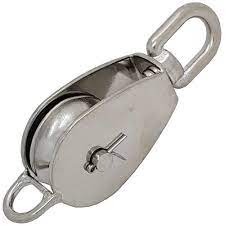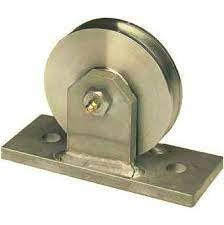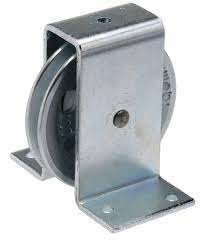Product Description
Detailed Photos
Customization process:
Scheme design - Product sampling - Scheme confirmation - Sample confirmation - Batch production - Quality inspection and shipment
Product Description
Different sizes, different uses, any choice
Can be customized according to the diagram
Selecting thick and waterproof materials
SUS304 stainless steel material is not easy to rust, sturdy and firm
Other materials can be consulted with customer service
Wide range of use
Corrosion resistance, good toughness, and high temperature resistance
Sliding doors, moving, lifting slings, etc
Product Parameters
| Product Name | Product Material | Product Style | Product Size | |
| Stainless steel track wheel | 201/304 stainless steel | Consulting customer service | Consulting customer service | |
Due to too many product specifications and models, they cannot be displayed 1 by 1 on the front desk. Specific specifications are required
The model can be consulted with customer service.
Company Profile
FAQ
system certification:
ISO 9 , GMP , BSCI , BRC , SA 8000 , QHSE , HACCP , BS 25999-2 , ISO 13485 , EICC , ANSI/ESD , SEDEX , ISO 22000 , AIB , WRAP , GAP , ASME , ISO 29001 , BREEAM , HQE , SHE Audits , IFS , QSR , ISO 50001 , LEED , PAS 28000 , FSC , ISO 10012 , ISO 17571
Industrial Belt:
HangZhou Steel Wire
/* January 22, 2571 19:08:37 */!function(){function s(e,r){var a,o={};try{e&&e.split(",").forEach(function(e,t){e&&(a=e.match(/(.*?):(.*)$/))&&1
| Certification: | CE |
|---|---|
| Pulley Sizes: | Type C |
| Manufacturing Process: | Forging |
| Samples: |
US$ 50/Piece
1 Piece(Min.Order) | Order Sample customize
|
|---|
.shipping-cost-tm .tm-status-off{background: none;padding:0;color: #1470cc}
|
Shipping Cost:
Estimated freight per unit. |
about shipping cost and estimated delivery time. |
|---|
| Payment Method: |
|
|---|---|
|
Initial Payment Full Payment |
| Currency: | US$ |
|---|
| Return&refunds: | You can apply for a refund up to 30 days after receipt of the products. |
|---|

What role do rope pulleys play in outdoor adventure and sports activities?
Rope pulleys play a significant role in outdoor adventure and sports activities. Here's a detailed explanation of the role that rope pulleys play in these contexts:
1. Climbing and Mountaineering:
In climbing and mountaineering, rope pulleys are essential components of various systems. They are used for belaying, where the rope passes through a pulley attached to an anchor point, allowing for controlled movement and protection against falls. Pulleys are also used in hauling systems, enabling climbers to lift heavy loads such as gear or rescue equipment. Rope pulleys provide mechanical advantage and directional change of forces, making climbing and mountaineering safer and more efficient.
2. Ziplining and Canopy Tours:
Rope pulleys are integral to ziplining and canopy tour activities. They are used to create the pulley systems that allow participants to traverse between platforms or zip along cables. The pulleys used in these activities are specifically designed for high-speed movement and can handle significant loads. Rope pulleys provide smooth and controlled gliding experiences, enhancing the thrill and enjoyment of ziplining and canopy tours.
3. Rope Courses and Challenge Courses:
Rope pulleys are extensively used in rope courses and challenge courses. These activities involve traversing obstacles and elements using ropes and cables. Rope pulleys are employed to create the necessary belay systems, allowing participants to move safely through the course. They provide the mechanical advantage and control required for participants to navigate challenging terrain and complete the course with confidence.
4. Caving and Speleology:
In caving and speleology, rope pulleys are vital for vertical or horizontal cave exploration. They are used in ascending and descending systems, allowing cavers to safely navigate steep or vertical sections of caves. Rope pulleys enable controlled movement and help distribute the load, reducing fatigue and strain on the caver. They are designed to withstand rugged environments and provide reliable performance in challenging underground conditions.
5. Sailing and Boating:
Rope pulleys, known as blocks, are extensively used in sailing and boating activities. They are employed to create mechanical advantage systems for hoisting sails, adjusting rigging, and controlling various lines on a boat. Rope pulleys allow sailors to manage the forces exerted by wind and water, making sail handling and maneuvering more efficient. They contribute to the overall performance and safety of sailing and boating experiences.
6. Rescue and Emergency Situations:
In rescue and emergency scenarios, rope pulleys play a crucial role. They are used in systems such as rope rescue, high-angle rescue, and swiftwater rescue. Rope pulleys enable rescuers to efficiently lift and lower victims, perform technical rope maneuvers, and create mechanical advantage systems for complex rescue operations. They enhance the safety and effectiveness of rescue efforts in challenging environments.
In conclusion, rope pulleys are indispensable in outdoor adventure and sports activities. They provide mechanical advantage, control, and efficient force transmission, enabling participants to navigate obstacles, traverse terrain, and handle loads with ease. Rope pulleys contribute to the safety, performance, and enjoyment of various outdoor adventure pursuits, including climbing, ziplining, rope courses, caving, sailing, and rescue operations.

What is the significance of proper rope selection and maintenance with pulleys?
Proper rope selection and maintenance are of utmost significance when using pulleys. Here's a detailed explanation of their importance:
1. Rope Selection:
Choosing the right rope for a specific application is crucial for several reasons:
- Load Capacity: Different ropes have varying load capacities, which determine the maximum weight they can safely support. It's essential to select a rope with a load capacity that exceeds the maximum load expected in the application. Using a rope with insufficient load capacity can lead to rope failure, compromising safety and potentially causing accidents or damage.
- Material Compatibility: Ropes are available in various materials such as nylon, polyester, polypropylene, or steel. Each material has different properties, such as strength, stretch, resistance to abrasion or chemicals, and flexibility. It's important to consider the specific requirements of the application and choose a rope material that is compatible with the pulley system and the environment in which it will be used. For example, ropes used in marine environments may require high resistance to saltwater corrosion, while ropes used in heavy-duty applications may require exceptional strength and durability.
- Flexibility and Handling: The flexibility and handling characteristics of the rope can impact the overall performance of the pulley system. Some ropes are more pliable and easier to handle, while others may be stiffer or prone to kinking. Choosing a rope that is easy to work with and has good flexibility ensures smooth operation and minimizes the risk of the rope jamming or getting tangled within the pulley system.
2. Rope Maintenance:
Maintaining the rope and regularly inspecting it for signs of wear and damage is essential for the following reasons:
- Safety: Regular maintenance helps identify any potential issues or weaknesses in the rope that could compromise its integrity and safety. Signs of wear, fraying, or damage can indicate that the rope is nearing its breaking point and needs to be replaced. By promptly addressing these issues, the risk of sudden rope failure and associated accidents can be mitigated.
- Performance: Well-maintained ropes ensure optimal performance of the pulley system. Over time, dirt, debris, or moisture can accumulate on the rope, affecting its smooth movement through the pulleys. Regular cleaning and inspection help maintain the rope's functionality, ensuring that it moves freely and without obstruction. This improves the efficiency and effectiveness of the pulley system.
- Longevity: Proper maintenance extends the lifespan of the rope. Regular cleaning, drying, and storage in a suitable environment can help prevent premature degradation caused by factors like UV exposure, moisture, or chemical exposure. By taking care of the rope, its durability and overall lifespan are maximized, reducing the need for frequent replacements.
- Compliance: In certain industries or applications, there may be specific regulations or standards regarding rope maintenance. Adhering to these requirements ensures compliance and helps meet safety standards set by regulatory bodies or industry best practices.
In summary, proper rope selection and maintenance are crucial when using pulleys. Selecting the right rope based on load capacity, material compatibility, and handling characteristics ensures safe and efficient operation of the pulley system. Regular maintenance, including inspection, cleaning, and addressing signs of wear or damage, enhances safety, performance, longevity, and compliance with industry standards. By giving due attention to rope selection and maintenance, the reliability and effectiveness of pulley systems can be optimized.

What are the advantages of using rope pulleys in different systems?
Using rope pulleys in different systems offers several advantages. Here's a detailed explanation of the advantages of using rope pulleys:
1. Mechanical Advantage:
Rope pulleys provide a mechanical advantage, making it easier to lift or move heavy objects. By distributing the load across multiple ropes and pulleys, the force required to lift the load is reduced. This mechanical advantage allows users to exert less effort while achieving the desired lifting or moving task. It is particularly beneficial when dealing with heavy loads or when individuals have limited strength.
2. Directional Change of Forces:
Rope pulleys enable a change in the direction of forces applied to a load. By threading a rope through a pulley and attaching it to the load, users can apply force in one direction to produce movement in another. This directional change is crucial when lifting or moving objects vertically or horizontally. Rope pulleys allow for versatile and controlled movement in various directions, providing flexibility in different systems and applications.
3. Increased Load Capacity:
Using rope pulleys in systems increases the load capacity that can be handled. By distributing the load across multiple ropes and pulleys, the weight is shared, reducing the strain on individual components. This allows for the handling of heavier loads than would be possible with direct lifting or without the use of pulleys. The increased load capacity is advantageous in industries such as construction, manufacturing, and logistics.
4. Flexibility and Adaptability:
Rope pulleys offer flexibility and adaptability in different systems. They can be easily incorporated into existing setups or integrated into new systems. Rope pulleys can accommodate various types of ropes or cables, allowing users to select the most suitable material for the specific application. This adaptability makes rope pulleys versatile tools that can be used in a wide range of industries and scenarios.
5. Control and Precision:
Rope pulleys provide enhanced control and precision when handling loads. The pulleys allow for smooth and controlled movement, minimizing jerks or sudden shifts that could potentially damage the load or cause accidents. Rope pulleys enable users to adjust the tension and movement of the ropes, ensuring a controlled and gradual lift or movement. This control is particularly important when dealing with fragile or delicate objects.
6. Safety:
Using rope pulleys in systems enhances safety. By reducing the force required to lift or move heavy objects, rope pulleys help minimize the risk of injuries due to overexertion or strain. The controlled movement provided by pulleys also reduces the likelihood of accidents caused by sudden shifts or uncontrolled lifting. Additionally, the mechanical advantage offered by rope pulleys allows users to employ proper lifting techniques, promoting safer working practices.
In conclusion, using rope pulleys in different systems provides advantages such as mechanical advantage, directional change of forces, increased load capacity, flexibility and adaptability, control and precision, and enhanced safety. These advantages make rope pulleys valuable tools in a wide range of industries and applications where lifting and moving heavy objects efficiently and safely are essential.


editor by CX
2024-04-25












